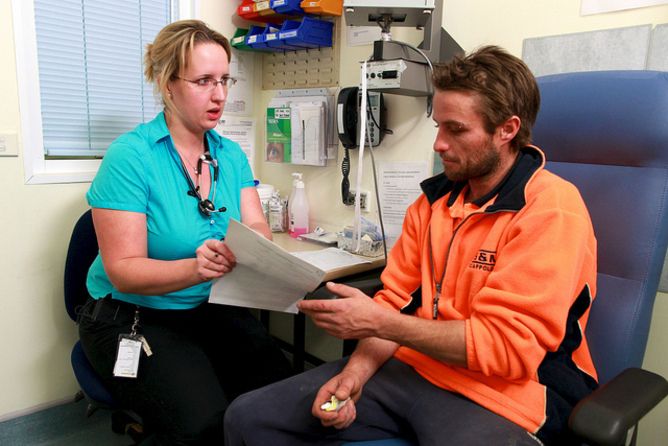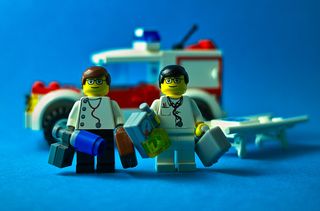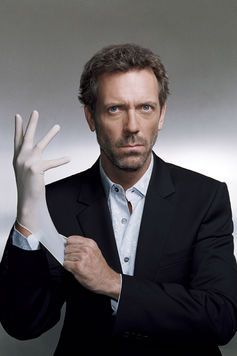
GP Consultations are Often More Complicated Than You Think (Op-Ed)

This article was originally published at The Conversation. The publication contributed the article to LiveScience's Expert Voices: Op-Ed & Insights.
When we think of what defines a medical consultation, we quite reasonably think of the “presenting complaint”: the medical problem which the patient brings to the doctor. In movies, literature, common wisdom and jokes, the doctor’s role is simple and rather passive – make the diagnosis and treat it.
Sure, some doctors might be more skilled than others – think of TV’s Dr House, who brilliantly diagnoses an incredibly rare disease at the end of each episode – but even then, it all boils down to the systematic application of technical knowledge. A clever computer algorithm could, in theory, work through the same deductive process of ruling out alternative possibilities to reveal the unique diagnosis.
I call these consultations linear: each step could be diagrammatically linked to the next by a sequence of arrows heading towards a specific diagnosis. The line of arrows then continues through to the correct treatment pathway.
But many primary care consultations are non-linear. Newtonian laws don’t apply; instead, they have been supplanted by chaos theory. Because of the underlying complexity and multiple possibilities, each question or reflection from the doctor might twist the next arrow in any direction — even split it into many parts.

This tangle of potential paths through the consultation varies not only according to patient factors, but to the doctor’s attitude and approach. An identical patient with an identical presenting symptom of “tension headache” might lead to a thousand different discussions, from quitting smoking, to walking the dog daily, to the gastric side effects of anti-inflammatory tablets.
New, single-issue problems, even if serious, usually require little imagination to manage as most doctors would approach them in the same way. A previously healthy sportsperson carried in with a broken leg is a significant medical event, but even a junior doctor would usually comfortably set off on the well-signposted path of pain relief, X-ray and transport to somewhere inhabited by an orthopaedic surgeon.
Sign up for the Live Science daily newsletter now
Get the world’s most fascinating discoveries delivered straight to your inbox.
But many interactions in general practices and emergency departments are not so clear-cut. People have complex chronic conditions (diabetes, obesity, depression), drug and alcohol problems, loneliness, chronic pain, confusing symptoms, difficulty telling their story, dementia, overwhelming family responsibilities, a bagful of medications, and nagging problems for which no cause or cure can be found.
Doctor as the drug
The world’s first professor of psychoanalysis, Michael Balint, introduced the concept of the doctor acting as a “primary therapeutic agent” in his 1957 book The Doctor, the Patient and His Illness.
Physicians in Balint’s era often saw their role as limited to a dispenser of the right medicinal cure, which could today see a computer or robot replace a doctor using a linear pathway which ends with the correct prescription.
Balint realised that, rather than just being passive dispensers of medication, doctors frequently use themselves as the agent of change. This starts when the patient walks in the door and the doctor greets them warmly and begins an open-ended exchange.

Actively listening to the patient’s story about their illness becomes the therapy itself – this interaction was coined “doctor as drug”. A medication prescription or a referral to a specialist may be a part of the package, or it may not.
Interestingly, the surprising popularity of homeopathy could well be due to its practitioners using this “therapist as drug” concept. After all, in its purest form, the only “drug” a homeopath will prescribe is a few drops of plain water, ambitiously labelled as various other things.
The patient-centred method
The concept of patient-centred care was fairly new when I was taught the art of medical practice twenty years ago. I couldn’t have defined it, but had some idea of what it wasn’t: disease-centred, technology-centred, the sort of treatment you would find in an intensive care unit.
Medicine-by-algorithm is quite appropriate if you’ve been run over by a car. Life-threatening situations demand a linear pattern of thought: checking for danger, response, airways, breathing, circulation (DRABC); secondary survey for injuries; run some tests; correct discrepancies and run the tests again. In ICU, you want to be looked after by someone with a deep understanding of crushed organs and machines that go “bing”.
But the patient-centred approach finds its natural home among the chaos of primary care. For non-linear problems, patients must be given the opportunity to describe in their own way the various things that are troubling them. The doctor must encourage feedback as to whether the medical summation of the issues rings true, and the patient should help craft the management plan.

Some doctors haven’t mastered this, or choose not to spend the time and intellectual effort required. When faced with a non-linear consultation, they will quickly try to reach closure by printing a prescription, test request or referral. They go straight to the nearest conclusion, ignoring all the opportunities down alternative paths.
At the end of their crammed working day, they will have done a reasonable job with linear consultations (a repeat script and some paperwork please) but have—usually unwittingly—failed the patients with non-linear problems.
In contrast, an effective primary care practitioner will seamlessly switch between linear and non-linear consultation styles as occasion demands it, many times a day.
At times, they find themselves channelling Dr House, our modern-day Sherlock Holmes, focused on hunting down that single elusive diagnosis. On other occasions, they must instead feel their way through a foggy consultation, listening intently for echoes, continually judging the best direction forward. These clouded journeys may lead to places neither participant expected at the outset.
Further reading:
Six dollar co-payment to see a doctor: a GP’s view
Paying doctors to keep patients healthy – if the price is right
Mind the gap: $6 GP visit proposal ignores the evidence
Justin Coleman does not work for, consult to, own shares in or receive funding from any company or organisation that would benefit from this article, and has no relevant affiliations.
This article was originally published at The Conversation. Read the original article. The views expressed are those of the author and do not necessarily reflect the views of the publisher. This version of the article was originally published on LiveScience.












